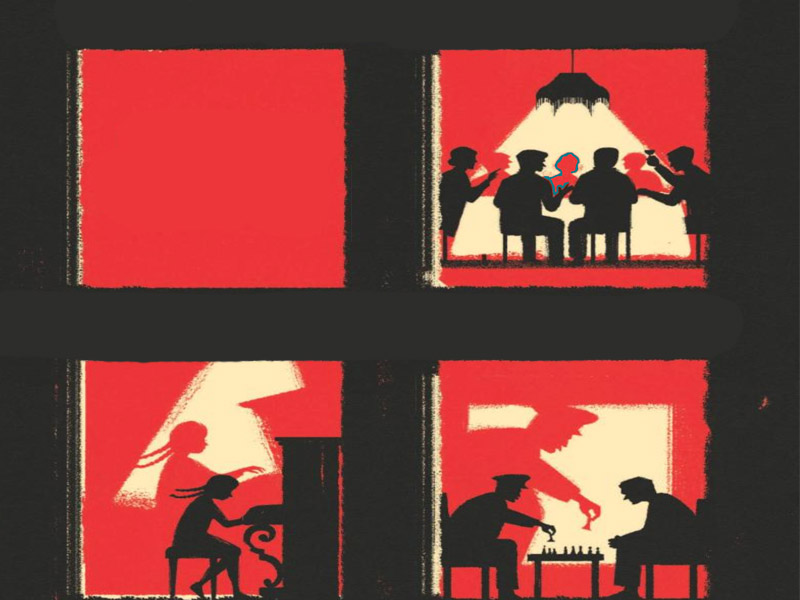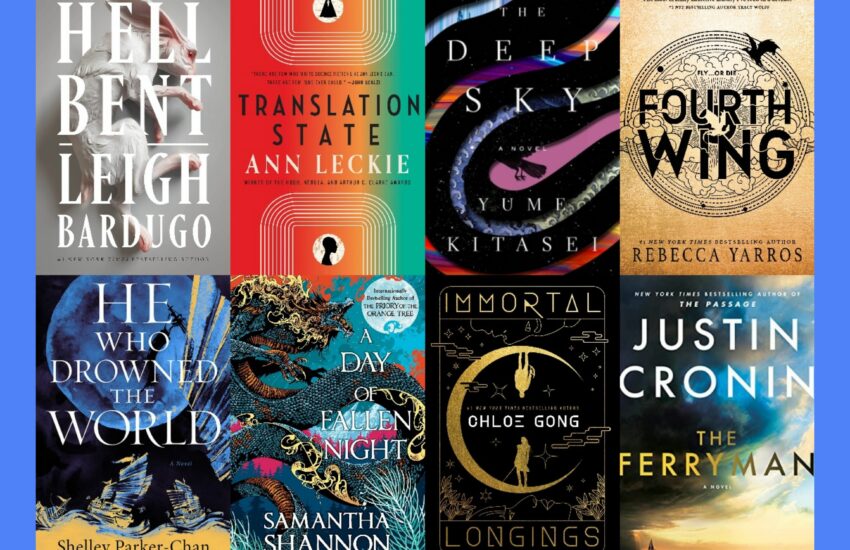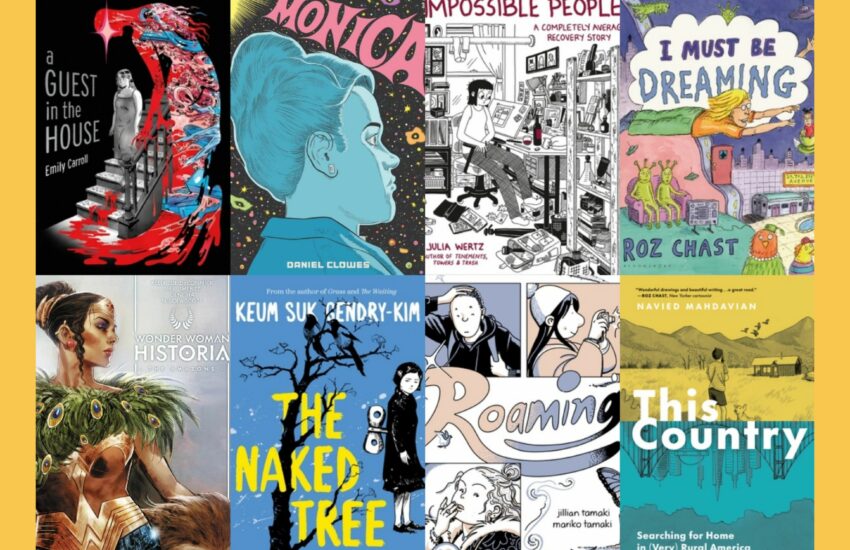The Best Books About The Russian Revolution
“What are the best books about The Russian Revolution?” We looked at 152 of the top Russian Revolution books, aggregating and ranking them so we could answer that very question!
The top 28 titles, all appearing on 2 or more “Best Russian Revolution” book lists, are ranked below by how many lists they appear on. The remaining 100+ titles, as well as the lists we used are in alphabetical order at the bottom of the page.
Happy Scrolling!
Top 28 Russian Revolution Books
28 .) August 1914 by Aleksander Solzhenitsyn
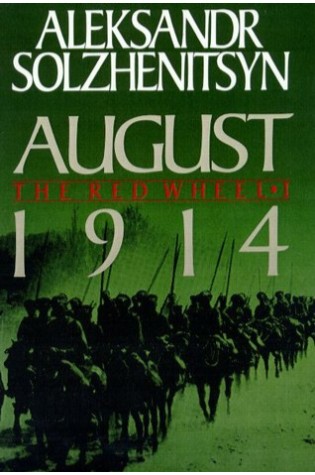 Lists It Appears On:
Lists It Appears On:
- Historian Mag
- Wikipedia
In his monumental narrative of the outbreak of the First World War and the ill-fated Russian offensive into East Prussia, Solzhenitsyn has written what Nina Krushcheva, in The Nation, calls “a dramatically new interpretation of Russian history.” The assassination of tsarist prime minister Pyotr Stolypin, a crucial event in the years leading up to the Revolution of 1917, is reconstructed from the alienating viewpoints of historical witnesses. The sole voice of reason among the advisers to Tsar Nikolai II, Stolypin died at the hands of the anarchist Mordko Bogrov, and with him perished Russia’s last hope for reform. Translated by H.T. Willetts.
27 .) A Gentleman in Moscow
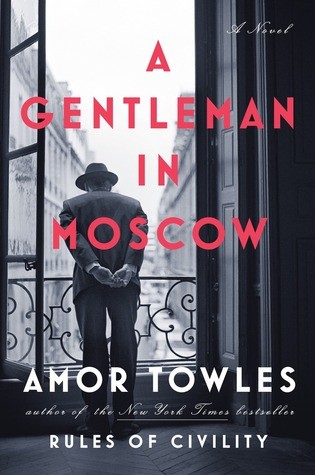 Lists It Appears On:
Lists It Appears On:
- Goodreads
- Mercury News
When, in 1922, he is deemed an unrepentant aristocrat by a Bolshevik tribunal, the count is sentenced to house arrest in the Metropol, a grand hotel across the street from the Kremlin. Rostov, an indomitable man of erudition and wit, has never worked a day in his life, and must now live in an attic room while some of the most tumultuous decades in Russian history are unfolding outside the hotel’s doors. Unexpectedly, his reduced circumstances provide him a doorway into a much larger world of emotional discovery.
26 .) And Quiet Flows the Don by Mikail Sholokov
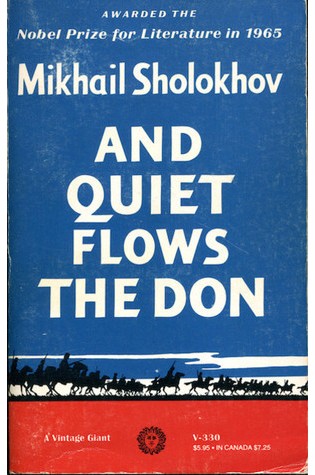 Lists It Appears On:
Lists It Appears On:
- Historian Mag
- Penguin
And Quiet Flows the Don or Quietly Flows the Don (Тихий Дон, lit. “The Quiet Don”) is 4-volume epic novel by Russian writer Mikhail Aleksandrovich Sholokhov. The 1st three volumes were written from 1925 to ’32 & published in the Soviet magazine October in 1928–32. The 4th volume was finished in 1940. The English translation of the 1st three volumes appeared under this title in 1934. The novel is considered one of the most significant works of Russian literature in the 20th century. It depicts the lives & struggles of Don Cossacks during WWI, the Russian Revolution & Russian Civil War. In 1965, Sholokhov was awarded the Nobel Prize for Literature for this novel.
25 .) Putin’s Kleptocracy: Who Owns Russia by Karen Dawisha
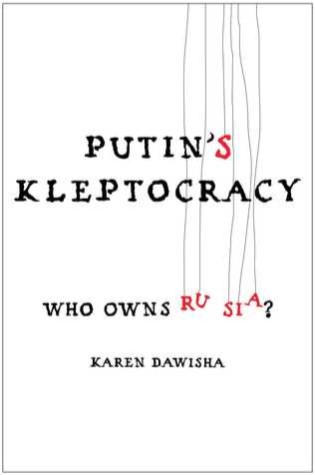 Lists It Appears On:
Lists It Appears On:
- Book Riot
- Mercury News
The raging question in the world today is who is the real Vladimir Putin and what are his intentions. Karen Dawisha’s brilliant Putin’s Kleptocracy provides an answer, describing how Putin got to power, the cabal he brought with him, the billions they have looted, and his plan to restore the Greater Russia. Russian scholar Dawisha describes and exposes the origins of Putin’s kleptocratic regime. She presents extensive new evidence about the Putin circle’s use of public positions for personal gain even before Putin became president in 2000. She documents the establishment of Bank Rossiya, now sanctioned by the US; the rise of the Ozero cooperative, founded by Putin and others who are now subject to visa bans and asset freezes; the links between Putin, Petromed, and Putin’s Palace near Sochi; and the role of security officials from Putin’s KGB days in Leningrad and Dresden, many of whom have maintained their contacts with Russian organized crime. Putin’s Kleptocracy is the result of years of research into the KGB and the various Russian crime syndicates. Dawisha’s sources include Stasi archives; Russian insiders; investigative journalists in the US, Britain, Germany, Finland, France, and Italy; and Western officials who served in Moscow. Russian journalists wrote part of this story when the Russian media was still free.
24 .) Red Cavalry by Isaac Babel
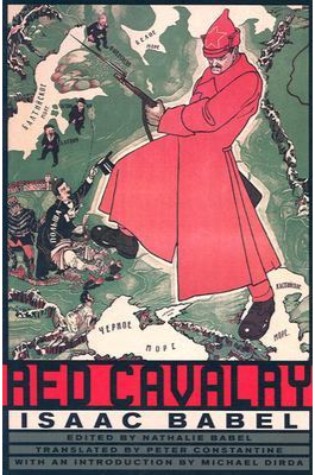 Lists It Appears On:
Lists It Appears On:
- Bois Dejasmin
- Penguin
One of the great masterpieces of Russian literature, the Red Cavalry cycle retains today the shocking freshness that made Babel’s reputation when the stories were first published in the 1920s. Using his own experiences as a journalist and propagandist with the Red Army during the war against Poland, Babel brings to life an astonishing cast of characters from the exuberant, violent era of early Soviet history: commissars and colonels, Cossacks and peasants, and among them the bespectacled, Jewish writer/intellectual, observing it all and trying to establish his role in the new Russia. Drawn from the acclaimed, award-winning Complete Works of Isaac Babel, this volume includes all of the Red Cavalry cycle; Babel’s 1920 diary, from which the material for the fiction was drawn; and his preliminary sketches for the stories—the whole constituting a fascinating picture of a great writer turning life into art.
23 .) Sashenka by Simon Sebag Montefiore
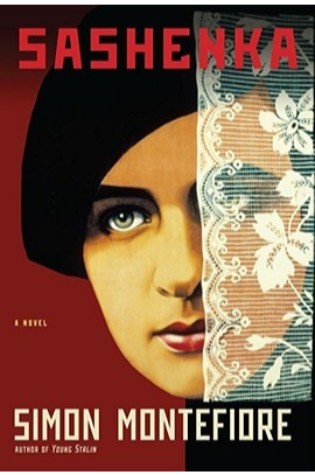 Lists It Appears On:
Lists It Appears On:
- Goodreads
- Historian Mag
Winter, 1916: In St Petersburg, Russia on the brink of revolution. Outside the Smolny Institute for Noble Young Ladies, an English governess is waiting for her young charge to be released from school. But so are the Tsar’s secret police… Beautiful and headstrong, Sashenka Zeitlin is just sixteen. As her mother parties with Rasputin and her dissolute friends, Sashenka slips into the frozen night to play her part in a dangerous game of conspiracy and seduction. Twenty years on, Sashenka has a powerful husband with whom she has two children. Around her people are disappearing, but her own family is safe. But she’s about to embark on a forbidden love affair which will have devastating consequences. Sashenka’s story lies hidden for half a century, until a young historian goes deep into Stalin’s private archives and uncovers a heart-breaking tale of passion and betrayal, savage cruelty and unexpected heroism – and one woman forced to make an unbearable choice.
22 .) The Autobiography of a Sexually Emancipated Communist Woman by Alexandra Kollontai
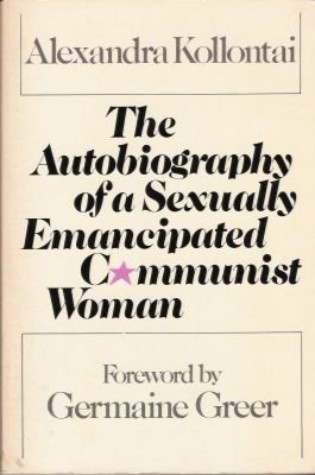 Lists It Appears On:
Lists It Appears On:
- Bois Dejasmin
- The Guardian
Prefatory Note This is the first time that the complete autobiography which Alexandra Kollontai wrote in 1926 has been published. The sentences and paragraphs in italics were crossed out in the galleyproofs and left out in her time. Variants were indicated in footnotes which likewise were rejected and crossed out. The reader thus will have an idea of the extent and the intensity of corrections made by the author under the pressure of the gradually sharpening Stalinist control. an excerpt from the opening: The Aims and Worth of My Life Nothing is more difficult than writing an autobiography. What should be emphasized? Just what is of general interest? It is advisable, above all, to write honestly and dispense with any of the conventional introductory protestations of modesty. For if one is called upon to tell about one’s life so as to make the events that made it what it became useful to the general public, it can mean only that one must have already wrought something positive in life, accomplished a task that people recognize.
21 .) The Bolsheviks and Workers’ Control 1917-1921 by Maurice Brinton
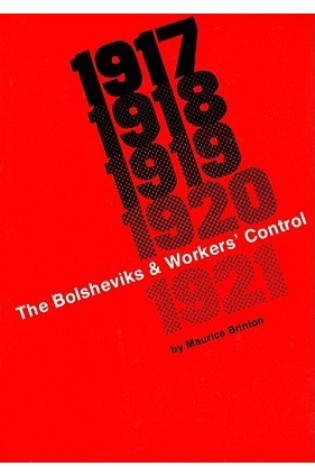 Lists It Appears On:
Lists It Appears On:
- Goodreads
- Libcom
Brinton undertakes an innovative analysis of the Russian revolution & its implications for workers’ autonomy. As he demonstrates, an appreciation of the historical precedent can generate fresh insights into contemporary problems.
20 .) The Jewel of St. Petersburg
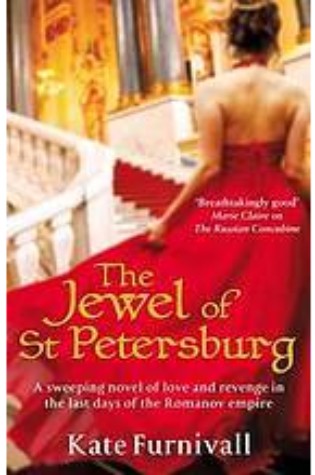 Lists It Appears On:
Lists It Appears On:
- Goodreads
- Wikipedia
Russia, 1910. Valentina Ivanova is the darling of St. Petersburg’s elite aristocracy-until her romance with a Danish engineer creates a terrible scandal and her parents push her into a loveless engagement with a Russian count. Meanwhile, Russia itself is bound for rebellion. With the Tsar and the Duma at each other’s throats, and the Bolsheviks drawing their battle lines, the elegance and opulence of Tsarist rule are in their last days. And Valentina will be forced to make a choice that will change not only her own life, but the lives of those around her forever…
19 .) The People’s Act of Love by James Meek
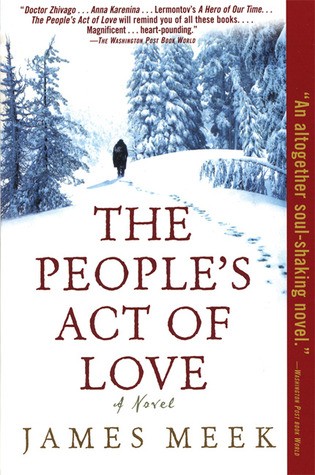 Lists It Appears On:
Lists It Appears On:
- Goodreads
- Historian Mag
Set in a time of great social upheaval, warfare, and terrorism, and against a stark, lawless Siberia at the end of the Russian Revolution, The People’s Act of Love portrays the fragile coexistence of a beautiful, independent mother raising her son alone, a megalomaniac Czech captain and his restless regiment, and a mystical separatist Christian sect. When a mysterious, charismatic stranger trudges into their snowy village with a frighteningly outlandish story to tell, its balance is shaken to the core.
18 .) The Romanovs
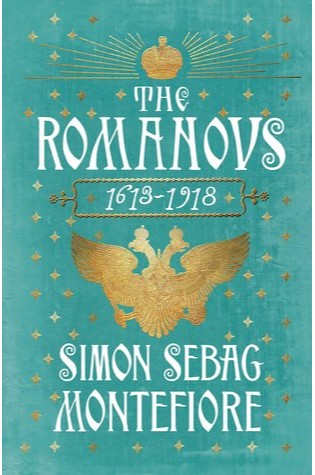 Lists It Appears On:
Lists It Appears On:
- Historian Mag
- Pan Macmillan
The Romanovs were the most successful dynasty of modern times, ruling a sixth of the world’s surface for three centuries. How did one family turn a war-ruined principality into the world’s greatest empire? And how did they lose it all? This is the intimate story of twenty tsars and tsarinas, some touched by genius, some by madness, but all inspired by holy autocracy and imperial ambition. Simon Sebag Montefiore’s gripping chronicle reveals their secret world of unlimited power and ruthless empire-building, overshadowed by palace conspiracy, family rivalries, sexual decadence and wild extravagance, with a global cast of adventurers, courtesans, revolutionaries and poets, from Ivan the Terrible to Tolstoy and Pushkin, to Bismarck, Lincoln, Queen Victoria and Lenin.
17 .) The Russian Revolution by Sheila Fitzpatrick
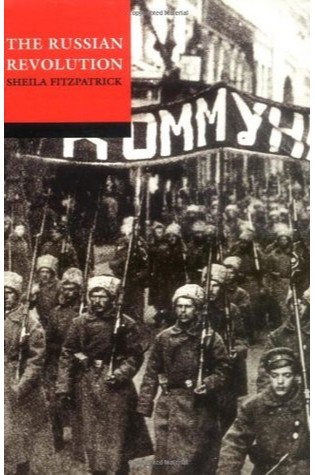 Lists It Appears On:
Lists It Appears On:
- Book Riot
- Goodreads
This provocative and eminently readable work looks at the many upheavals of the Russian Revolution as successive stages in a single process. Focusing on the Russian Revolution in its widest sense, Fitzpatrick covers not only the events of 1917 and what preceded them, but the nature of the social transformation brought about by the Bolsheviks after they took power. Making use of a huge amount of previously secret information in Soviet archives and unpublished memoirs, this detailed chronology recounts each monumental event from the February and October Revolutions of 1917 and the Civil War of 1918-1920, through the New Economic Policy of 1921 and the 1929 First Five-Year Plan, to Stalin’s “revolution from above” at the end of the 1920s and the Great Purge of the late 1930s.
16 .) The Russian Revolution 1917-1932
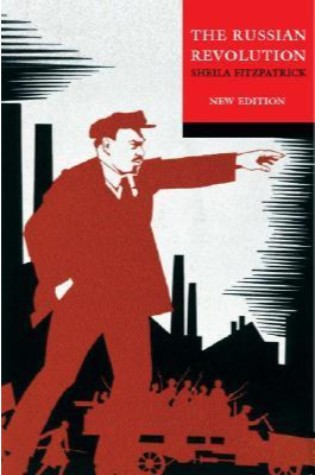 Lists It Appears On:
Lists It Appears On:
- Book Depository
- Goodreads
This provocative and eminently readable work looks at the many upheavals of the Russian Revolution as successive stages in a single process. Focusing on the Russian Revolution in its widest sense, Fitzpatrick covers not only the events of 1917 and what preceded them, but the nature of the social transformation brought about by the Bolsheviks after they took power. Making use of a huge amount of previously secret information in Soviet archives and unpublished memoirs, this detailed chronology recounts each monumental event from the February and October Revolutions of 1917 and the Civil War of 1918-1920, through the New Economic Policy of 1921 and the 1929 First Five-Year Plan, to Stalin’s “revolution from above” at the end of the 1920s and the Great Purge of the late 1930s.
15 .) The Russian Revolution from Lenin to Stalin 1917-1929
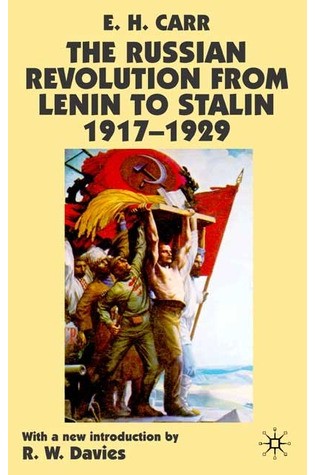 Lists It Appears On:
Lists It Appears On:
- Chomsky List
- Goodreads
E.H. Carr is the acknowledged authority on Soviet Russia. In The Russian Revolution from Lenin to Stalin 1917 – 1929, he provides the student and general reader alike with insights and knowledge of a lifetime’s work. This book, now available in a brand new edition, is, without doubt, the standard short history of the Russian Revolution and now contains a new introduction by R.W. Davies.
14 .) Towards the Flame: Empire, War and the End of Tsarist Russia by Dominic Lieven
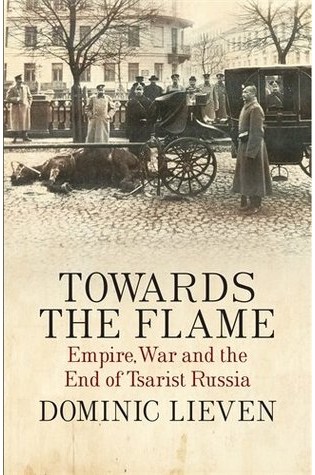 Lists It Appears On:
Lists It Appears On:
- Bois Dejasmin
- The Guardian
The Russian decision to mobilize in July 1914 may have been the single most catastrophic choice of the modern era. Some articulate, thoughtful figures around the Tsar understood Russia’s fragility, and yet they were shouted down by those who were convinced that, despite Germany’s patent military superiority, Russian greatness required decisive action. Russia’s rulers thought they were acting to secure their future, but in fact – after millions of deaths and two revolutions – they were consigning their entire class to death or exile and their country to a uniquely terrible generations-long experiment under a very different regime. Dominic Lieven is a Senior Research Fellow of Trinity College,Cambridge University, and a Fellow of the British Academy.
13 .) Year One of the Russian Revolution by Victor Serge
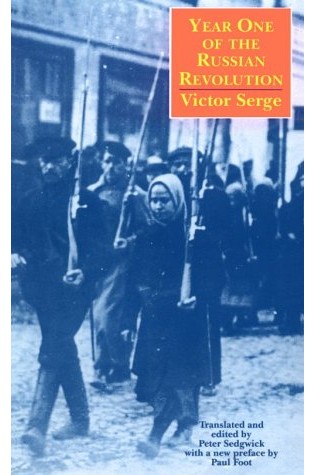 Lists It Appears On:
Lists It Appears On:
- Goodreads
- The Guardian
[A] masterpiece of reportorial thoroughness, painstaking research, and serious reflection.
12 .) Caught in the Revolution: Petrograd, Russia, 1917 – A World on the Edge
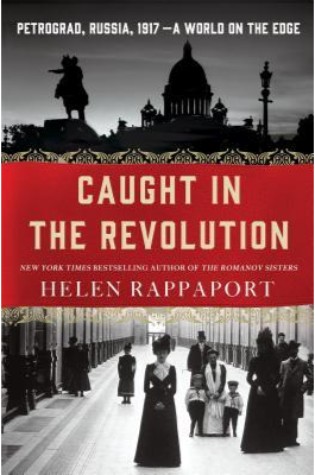 Lists It Appears On:
Lists It Appears On:
- Book Depository
- Goodreads
- The Globe And Mail
Between the first revolution in February 1917 and Lenin’s Bolshevik coup in October, Petrograd (the former St Petersburg) was in turmoil – felt nowhere more keenly than on the fashionable Nevsky Prospekt where the foreign visitors and diplomats who filled hotels, clubs, bars and embassies were acutely aware of the chaos breaking out on their doorsteps and beneath their windows.
11 .) Four Sisters:The Lost Lives of the Romanov Grand Duchesses by Helen Rappaport
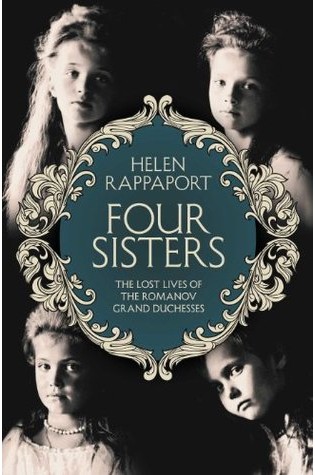 Lists It Appears On:
Lists It Appears On:
- Book Depository
- Historian Mag
- Pan Macmillan
On 17 July 1918, four young women walked down twenty-three steps into the cellar of a house in Ekaterinburg. The eldest was twenty-two, the youngest only seventeen. Together with their parents and their thirteen-year-old brother, they were all brutally murdered. Their crime: to be the daughters of the last Tsar and Tsaritsa of All the Russias.
10 .) October: The Story of the Russian Revolution by China Miéville
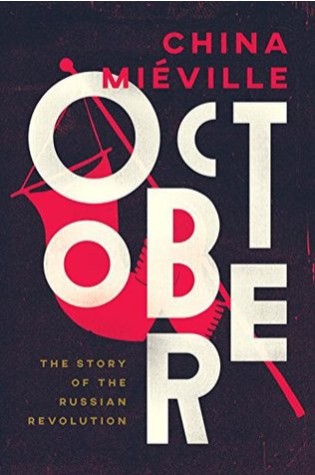 Lists It Appears On:
Lists It Appears On:
- Book Depository
- Goodreads
- Indepenent
In February 1917, in the midst of bloody war, Russia was still an autocratic monarchy: nine months later, it became the first socialist state in world history. How did this unimaginable transformation take place? How was a ravaged and backward country, swept up in a desperately unpopular war, rocked by not one but two revolutions? This is the story of the extraordinary months between those upheavals, in February and October, of the forces and individuals who made 1917 so epochal a year, of their intrigues, negotiations, conflicts and catastrophes. From familiar names like Lenin and Trotsky to their opponents Kornilov and Kerensky; from the byzantine squabbles of urban activists to the remotest villages of a sprawling empire; from the revolutionary railroad Sublime to the ciphers and static of coup by telegram; from grand sweep to forgotten detail. Historians have debated the revolution for a hundred years, its portents and possibilities: the mass of literature can be daunting. But here is a book for those new to the events, told not only in their historical import but in all their passion and drama and strangeness.
9 .) Rasputin: Faith, Power, and the Twilight of the Romanovs
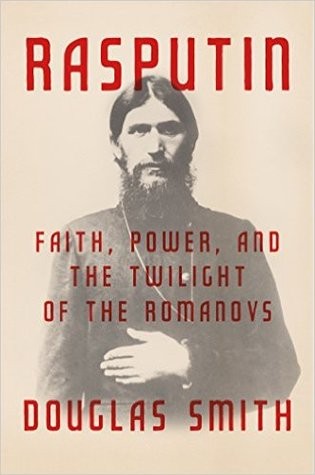 Lists It Appears On:
Lists It Appears On:
- Book Depository
- Goodreads
- Pan Macmillan
On the centenary of the death of Rasputin comes a definitive biography that will dramatically change our understanding of this fascinating figure A hundred years after his murder, Rasputin continues to excite the popular imagination as the personification of evil. Numerous biographies, novels, and films recount his mysterious rise to power as Nicholas and Alexandra’s confidant and the guardian of the sickly heir to the Russian throne. His debauchery and sinister political influence are the stuff of legend, and the downfall of the Romanov dynasty was laid at his feet. But as the prizewinning historian Douglas Smith shows, the true story of Rasputin’s life and death has remained shrouded in myth. A major new work that combines probing scholarship and powerful storytelling, Rasputin separates fact from fiction to reveal the real life of one of history’s most alluring figures.
8 .) Russia in Revolution: An Empire in Crisis by SA Smith
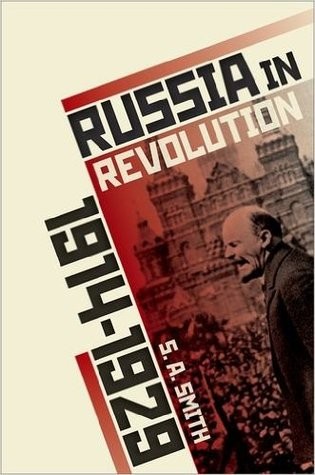 Lists It Appears On:
Lists It Appears On:
- Book Depository
- Indepenent
- The Globe And Mail
The Russian Revolution of 1917 transformed the face of the Russian empire, politically, economically, socially, and culturally, and also profoundly affected the course of world history for the rest of the twentieth century. Now, to mark the centenary of this epochal event, historian Steve Smith presents a panoramic account of the history of the Russian empire, from the last years of the nineteenth century, through the First World War and the revolutions of 1917 and the establishment of the Bolshevik regime, to the end of the 1920s, when Stalin simultaneously unleashed violent collectivization of agriculture and crash industrialization upon Russian society. Drawing on recent archivally-based scholarship, Russia in Revolution pays particular attention to the varying impact of the Revolution on the various groups that made up society: peasants, workers, non-Russian nationalities, the army, women and the family, young people, and the Church.
7 .) The House of Government: A Saga of the Russian Revolution by Yuri Slezkine
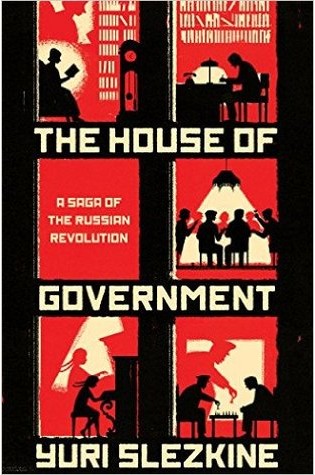 Lists It Appears On:
Lists It Appears On:
- Bois Dejasmin
- Book Depository
- Goodreads
The House of Government is unlike any other book about the Russian Revolution and the Soviet experiment. Written in the tradition of Tolstoy’s War and Peace, Grossman’s Life and Fate, and Solzhenitsyn’s The Gulag Archipelago, Yuri Slezkine’s gripping narrative tells the true story of the residents of an enormous Moscow apartment building where top Communist officials and their families lived before they were destroyed in Stalin’s purges. A vivid account of the personal and public lives of Bolshevik true believers, the book begins with their conversion to Communism and ends with their children’s loss of faith and the fall of the Soviet Union. Completed in 1931, the House of Government, later known as the House on the Embankment, was located across the Moscow River from the Kremlin. The largest residential building in Europe, it combined 550 furnished apartments with public spaces that included everything from a movie theater and a library to a tennis court and a shooting range. Slezkine tells the chilling story of how the building’s residents lived in their apartments and ruled the Soviet state until some eight hundred of them were evicted from the House and led, one by one, to prison or their deaths.
6 .) Doctor Zhivago by Boris Pasternak
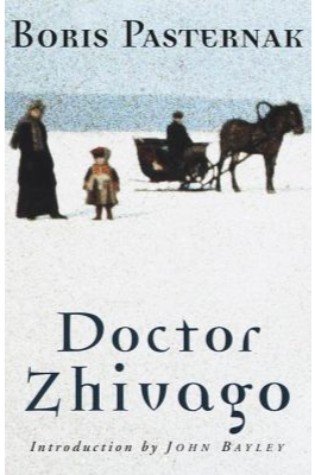 Lists It Appears On:
Lists It Appears On:
- Bois Dejasmin
- Goodreads
- Mercury News
- Wikipedia
This epic tale about the effects of the Russian Revolution and its aftermath on a bourgeois family was not published in the Soviet Union until 1987. One of the results of its publication in the West was Pasternak’s complete rejection by Soviet authorities; when he was awarded the Nobel Prize for Literature in 1958 he was compelled to decline it. The book quickly became an international best-seller. Dr. Yury Zhivago, Pasternak’s alter ego, is a poet, philosopher, and physician whose life is disrupted by the war and by his love for Lara, the wife of a revolutionary. His artistic nature makes him vulnerable to the brutality and harshness of the Bolsheviks. The poems he writes constitute some of the most beautiful writing in the novel.
5 .) A People’s Tragedy: The Russian Revolution: 1891–1924 by Orlando Figes
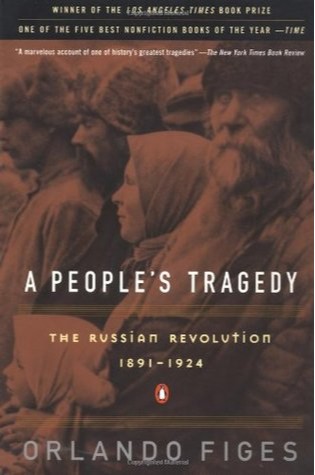 Lists It Appears On:
Lists It Appears On:
- Bois Dejasmin
- Five Books
- Goodreads
- Historian Mag
- Indepenent
It is history on an epic yet human scale. Vast in scope, exhaustive in original research, written with passion, narrative skill, and human sympathy, A People’s Tragedy is a profound account of the Russian Revolution for a new generation. Many consider the Russian Revolution to be the most significant event of the twentieth century. Distinguished scholar Orlando Figes presents a panorama of Russian society on the eve of that revolution, and then narrates the story of how these social forces were violently erased. Within the broad stokes of war and revolution are miniature histories of individuals, in which Figes follows the main players’ fortunes as they saw their hopes die and their world crash into ruins. Unlike previous accounts that trace the origins of the revolution to overreaching political forces and ideals, Figes argues that the failure of democracy in 1917 was deeply rooted in Russian culture and social history and that what had started as a people’s revolution contained the seeds of its degeneration into violence and dictatorship.
4 .) History of the Russian Revolution by Leon Trotsky
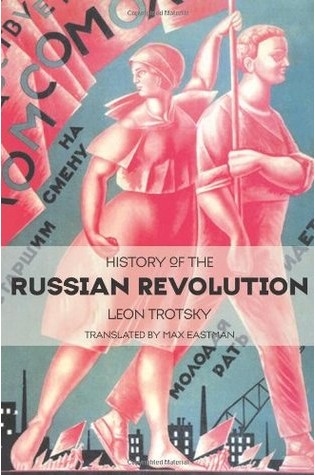 Lists It Appears On:
Lists It Appears On:
- Book Depository
- Five Books
- Goodreads
- Penguin
- The Guardian
Regarded by many as among the most powerful works of history ever written, this book offers an unparalleled account of one of the most pivotal and hotly debated events in world history. This book reveals, from the perspective of one of its central actors, the Russian Revolution’s profoundly democratic, emancipatory character.
3 .) Ten Days That Shook the World by John Reed
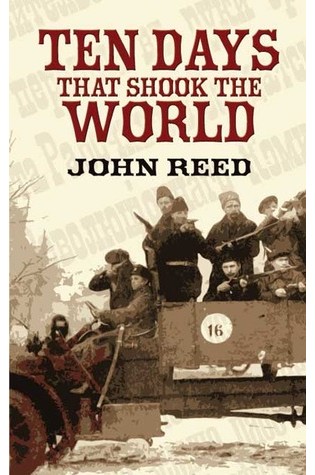 Lists It Appears On:
Lists It Appears On:
- Book Depository
- Goodreads
- Pan Macmillan
- Penguin
- The Guardian
John Reed conveys, with the immediacy of cinema, the impression of a whole nation in ferment and disintegration. A contemporary journalist writing in the first flush of revolutionary enthusiasm, he gives us a record of the events in Petrograd in November 1917, when Lenin and the Bolsheviks finally siezed power. Containing verbatim reports both of speeches by leaders and the chance comments of bystanders set against an idealized backcloth of the proletariat soldiers, sailors, and peasants uniting to throw off oppression, Reed’s account is the product of passionate involvement.
2 .) The Last of the Tsars: Nicholas II and the Russian Revolution by Robert Service
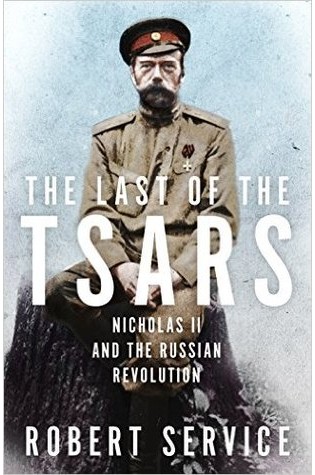 Lists It Appears On:
Lists It Appears On:
- Book Depository
- Goodreads
- Indepenent
- Pan Macmillan
- The Globe And Mail
In February 1917, Nicholas II, the last Tsar of All the Russias, abdicated and the dynasty that had ruled an empire for three hundred years was forced from power by revolution. Now, on the hundredth anniversary of that revolution, the eminent historian of Russia, Robert Service examines Nicholas’s reign in the year before his abdication and the months between that momentous date and his death, with his family, in Ekaterinburg in July 1918. The story has been told many times, but Service’s profound understanding of the period and his forensic examination of hitherto untapped sources, including the Tsar’s diaries and recorded conversations, shed remarkable new light on his reign, also revealing the kind of ruler Nicholas believed himself to have been, contrary to the disastrous reality. Last of the Tsars is a masterful study of a man who was almost entirely out of his depth, perhaps even wilfully so.
1 .) Lenin on the Train by Catherine Merridale
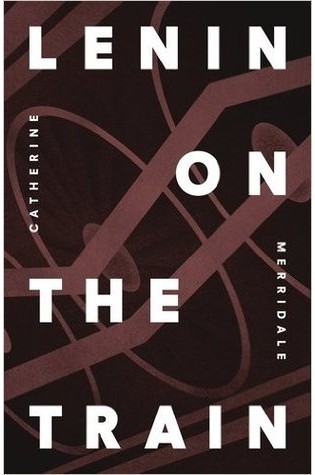 Lists It Appears On:
Lists It Appears On:
- Bois Dejasmin
- Book Depository
- Goodreads
- Pan Macmillan
- The Culture Trip
- The Globe And Mail
By 1917 the European war seemed to be endless. Both sides in the fighting looked to new weapons, tactics and ideas to break a stalemate that was itself destroying Europe. In the German government a small group of men had a brilliant idea: why not sow further confusion in an increasingly chaotic Russia by arranging for Vladimir Ilyich Lenin, the most notorious of revolutionary extremists, currently safely bottled up in neutral Switzerland, to go home? Catherine Merridale’s Lenin on the Train recreates Lenin’s extraordinary journey from harmless exile in Zurich, across a Germany falling to pieces from the war’s deprivations, and northwards to the edge of Lapland to his eventual ecstatic reception by the revolutionary crowds at Petrograd’s Finland Station. With great skill and insight Merridale weaves the story of the train and its uniquely strange group of passengers with a gripping account of the now half-forgotten liberal Russian revolution and shows how these events intersected. She brilliantly uses a huge range of contemporary eyewitnesses, observing Lenin as he travelled back to a country he had not seen for many years.
The 100+ Additional Best Books About The Russian Revolution
| # | Books | Authors | Lists |
| (Books Appear On 1 List Each) | |||
| 29 | 5327 | Wikipedia | |
| 30 | A Countess Below Stairs | Goodreads | |
| 31 | A History of the Russian Revolution | Leon Trotsky | The Culture Trip |
| 32 | A People’s History of the Russian Revolution | Book Depository | |
| 33 | A State of Nations: Empire and Nation-making in the Age of Lenin and Stalin edited byRonald Grigor Suny | Book Riot | |
| 34 | About 1917: Stories and Poems from the Russian Revolution | Historian Mag | |
| 35 | All the Kremlin’s Men | Mikhail Zygar | Book Riot |
| 36 | America’s Secret War against Bolshevism: U.S. Intervention in the Russian Civil War | 1917-1920 | Chomsky List |
| 37 | Anastasia: The Last Grand Duchess, Russia, 1914 | Goodreads | |
| 38 | Angel on the Square | Goodreads | |
| 39 | Animal Farm | Goodreads | |
| 40 | April Theses | Vladimir Lenin | Bois Dejasmin |
| 41 | Black Square: Adventures in the Post-Soviet World | Sophie Pinkham | The Culture Trip |
| 42 | Blood Red, Snow White | Wikipedia | |
| 43 | Bro | Wikipedia | |
| 44 | Bukharin and the Bolshevik Revolution: A Political Biography, 1888-1938 | Goodreads | |
| 45 | Collision Course: NATO | Russia | Chomsky List |
| 46 | Coup de Grâce | Wikipedia | |
| 47 | Darkness at Dawn: The Rise of the Russian Criminal State | David Satter | Book Riot |
| 48 | Enchantments | Goodreads | |
| 49 | Enquiring History: The Russian Revolution 1894-1924 | Book Depository | |
| 50 | Estado y revolución | Goodreads | |
| 51 | Factory Committees in the Russian Revolution | Rod Jones | Libcom |
| 52 | Fall of Giants | Goodreads | |
| 53 | Fear of Mirrors | Tariq Ali | The Culture Trip |
| 54 | First Person: An Astonishingly Frank Self-Portrait | Russia’s President | Book Riot |
| 55 | Foglesong | David S. | Chomsky List |
| 56 | Former People | Book Depository | |
| 57 | From the Russian revolution of 1917 to Stalinist totalitarianism | Agustín Guillamón | Libcom |
| 58 | Gardner | Lloyd C. | Chomsky List |
| 59 | Hasegawa | Tsuyoshi | Chomsky List |
| 60 | Hidden Treasures of the Romanovs | Book Depository | |
| 61 | History of the Makhnovist movement, 1918-1921 | Peter Arshinov | Libcom |
| 62 | I Was Anastasia | Goodreads | |
| 63 | Karl Marx: Greatness and Illusion | Gareth Stedman Jones | The Culture Trip |
| 64 | Kennan | George F. | Chomsky List |
| 65 | Knight Without Armour | Wikipedia | |
| 66 | Kronstadt 1917-21: The fate of a soviet democracy | Israel Getzler | Libcom |
| 67 | Land of the Firebird: The Beauty of Russia | Mercury News | |
| 68 | Lenin | Book Depository | |
| 69 | Lenin 2017: Remembering, Repeating, and Working Through | Book Depository | |
| 70 | Lenin in Zurich | Aleksandr Solzhenitsyn | Five Books |
| 71 | Lenin the Dictator: An Intimate Portrait | Victor Sebestyen | Bois Dejasmin |
| 72 | Lenin’s Tomb: The Last Days of the Soviet Empire | David Remnick | Book Riot |
| 73 | Life and Fate | Vasily Grossman | The Culture Trip |
| 74 | Marrese | Michael | Chomsky List |
| 75 | Memoirs of a Revolutionary | Goodreads | |
| 76 | Midnight in St Petersburg | Vanora Bennett | Historian Mag |
| 77 | Nicholas and Alexandra | Goodreads | |
| 78 | Putin Country: A Journey into the Real Russia | Anne Garrels | Book Riot |
| 79 | Racing the Enemy: Stalin | Truman | Chomsky List |
| 80 | Red Famine: Stalin’s War on Ukraine | Anne Applebaum | Indepenent |
| 81 | Red Petrograd: revolution in the factories 1917-1918 | S.A. Smith | Libcom |
| 82 | Revolutionary Russia, 1891 – 1991: A History | Goodreads | |
| 83 | Roots of Revolution: A History of the Populist and Socialist Movements in 19th- | The Guardian | |
| 84 | Russia as a Developing Society | Chomsky List | |
| 85 | Russia in Flames | Book Depository | |
| 86 | Russia Leaves the War: Soviet-American Relations | 1917-1920 | Chomsky List |
| 87 | Russia: What Everyone Needs to Know | Mercury News | |
| 88 | Russia’s Unfinished Revolution: Political Change From Gorbachev to Putin | Michael McFaul | Book Riot |
| 89 | Russian Labour and Bolshevik Power after October | William Rosenberg | Libcom |
| 90 | Russian Revolution 1917: A Personal Record | NN Sukhanov | The Guardian |
| 91 | Russian Revolutionary Posters | Book Depository | |
| 92 | Safe for Democracy: The Anglo-American Response to Revolution | 1913-1923 | Chomsky List |
| 93 | Second-hand Time | Svetlana Alexievich | The Culture Trip |
| 94 | Shanin | Teodor | Chomsky List |
| 95 | Six Weeks in Russia in 1919 | Arthur Ransome | Five Books |
| 96 | Smoking Gun: Trump and Russia: Nothing to See Here? | Prograssive | |
| 97 | Soviet Subsidization of Trade With Eastern Europe | Chomsky List | |
| 98 | Soviets and Factory Committees in the Russian Revolution | Peter Rachleff | Libcom |
| 99 | Spies and Commissars | Book Depository | |
| 100 | Steel and Iron | Wikipedia | |
| 101 | Subsistence riots in Russia during World War I | Barbara Engel | Libcom |
| 102 | The Amber Keeper | Goodreads | |
| 103 | The Blackguard | Wikipedia | |
| 104 | The Bolshevik Revolution 1917-23, Vol 1 | Goodreads | |
| 105 | The Bolshevik Revolution 1917-23, Vol 2 | Goodreads | |
| 106 | The Bolsheviks Come To Power: The Revolution of 1917 in Petrograd | Goodreads | |
| 107 | The Bolsheviks in Power: The First Year of Soviet Rule in Petrograd | Goodreads | |
| 108 | The Commissariat of Enlightenment | Sheila Fitzpatrick | The Guardian |
| 109 | The Debate on Soviet Power | John LH Keep (editor and translator) | Five Books |
| 110 | The Dilemmas of Lenin | Tariq Ali | Bois Dejasmin |
| 111 | The Drivel of a Diplomat: Michael McFaul’s ‘From Cold War to Hot Peace’ | Prograssive | |
| 112 | The End of Tsarist Russia: The March to World War I and Revolution | Dominic Lieven | Book Riot |
| 113 | The Family Romanov: Murder, Rebellion, and the Fall of Imperial Russia | Goodreads | |
| 114 | The Foundation Pit | Andrei Platonov | Bois Dejasmin |
| 115 | The Golden Sabre | Wikipedia | |
| 116 | The House of Special Purpose | Goodreads | |
| 117 | The Invention of Russia: From Gorbachev’s Freedom to Putin’s War | Arkady Ostrovsky | Book Riot |
| 118 | The Kitchen Boy: A Novel of the Last Tsar | Goodreads | |
| 119 | The Last Days of the Romanovs: Tragedy at Ekaterinburg | Goodreads | |
| 120 | The Last Empire: The Final Days of the Soviet Union | Mercury News | |
| 121 | The Man without a Face | Masha Gessen | Book Riot |
| 122 | The Master and Margarita | Mikhail Bulgakov | The Culture Trip |
| 123 | The New Tsar | Mercury News | |
| 124 | The Potential Rise of American Tyranny | Prograssive | |
| 125 | The Prophet Armed: Trotsky, 1879-1921 | Goodreads | |
| 126 | The Prophet Outcast: Trotsky, 1929-1940 | Goodreads | |
| 127 | The Prophet Unarmed: Trotsky, 1921-1929 | Goodreads | |
| 128 | The Race to Save the Romanovs | Book Depository | |
| 129 | The Red Notice: A True Story of High Finance, Murder, and One Man’s Fight for Justice | Bill Browder | Book Riot |
| 130 | The Red Wheel | Wikipedia | |
| 131 | The Revolution of Marina M. | Goodreads | |
| 132 | The Romanov Empress | Goodreads | |
| 133 | The Romanov Sisters: The Lost Lives of the Daughters of Nicholas and Alexandra | Goodreads | |
| 134 | The Romanovs: 1613-1918 | Goodreads | |
| 135 | The Romanovs: The Final Chapter | Goodreads | |
| 136 | The Russian Concubine | Goodreads | |
| 137 | The Russian Empire 1450-1801 | Mercury News | |
| 138 | The Russian Revolution: A Very Short Introduction | Goodreads | |
| 139 | The Russians | Mercury News | |
| 140 | The Splintered Empires | Book Depository | |
| 141 | The State and Revolution | Penguin | |
| 142 | The Tasks of the Proletariat in the Present Revolution/April Theses | Vladimir Ilyich Lenin | The Guardian |
| 143 | The unknown revolution, 1917-1921 | Volin | Libcom |
| 144 | The Wanderers | Wikipedia | |
| 145 | The White Guard | Mikail Bulgatov | Historian Mag |
| 146 | Through the Russian Revolution | Albert Rhys Williams | The Guardian |
| 147 | Time After Time | Wikipedia | |
| 148 | To Free the Romanovs | Book Depository | |
| 149 | Truth-Testing in the Post-Truth Era | Prograssive | |
| 150 | Wall Street and the Bolshevik Revolution | Book Depository | |
| 151 | Wolfe | Bertram David | Chomsky List |
| 152 | Zoya | Wikipedia | |
17 Best Russian Revolution Book Sources/Lists
| Source | Article |
| Bois Dejasmin | 10 Books to Read About the Russian Revolution « Bois de Jasmin |
| Book Depository | Russian Revolution Books | Book Depository |
| Book Riot | A Russian History Reading List – Book Riot |
| Chomsky List | Chomsky’s Recommended Russia Books List | ChomskyList.com |
| Five Books | The Best Books on Revolutionary Russia | Five Books |
| Goodreads | Popular Russian Revolution Books – Goodreads |
| Historian Mag | Top Ten Books about The Russian Revolution – Historia Magazine |
| Indepenent | 6 best Russian history books | The Independent |
| Libcom | Top 10 texts about the 1917 Russian Revolution – Libcom.org |
| Mercury News | Understanding Russia: best books, movies to get up to speed |
| Pan Macmillan | The best books on the Russian Revolution – Pan Macmillan |
| Penguin | 5 classics to read on the Russian Revolution – Penguin Books |
| Prograssive | Books: The Russian Revolution at 100 Years – Progressive.org |
| The Culture Trip | The Best Books to Read on the Russian Revolution, a Recommended … |
| The Globe And Mail | Four new books mark the 100th anniversary of the Russian revolution … |
| The Guardian | Top 10 books about the Russian Revolution | Books | The Guardian |
| Wikipedia | Category:Novels set in the Russian Revolution – Wikipedia |
